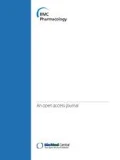Background
Signaling via the nitric oxide (NO) – soluble guanylate cyclase (sGC) – cyclic guanosine monophosphate (cGMP) pathway is frequently impaired in cardiovascular disease states providing a rationale for enhancing it pharmacologically. Nitrovasodilators have been used for more than a century to induce vasodilation via the sGC-cGMP pathway; however, the development of tolerance and potentially adverse cGMP-independent actions of nitrovasodilators such as promoting oxidative stress and protein modification are functionally important limitations. BAY 58–2667 is a novel, NO-independent sGC activator which is not associated with the development of tolerance and which preferentially activates oxidized or heme-free sGC, which both are insensitive to endogenous NO and nitrovasodilators [1, 2]. In this study we sought to define the cardiorenal actions of BAY 58–2667 as compared to nitroglycerin (NTG) in experimental heart failure (HF). We hypothesized that BAY 58–2667 would potently unload the heart and preserve renal function in a canine model of HF in a manner similar to NTG.
Methods and results
HF was induced by rapid ventricular pacing. After 10 days of pacing, cardiorenal and humoral function were assessed in an acute study at baseline and with administration of 2 doses of BAY 58–2667 (0.1 and 0.3 μg/kg/min; n = 7) or NTG (1 and 5 μg/kg/min; n = 6). *p < 0.05 vs. respective baseline. Administration of 0.3 ug/kg/min BAY 58–2667 reduced mean arterial pressure (97 ± 7 to 68 ± 5* mmHg), right atrial pressure (6.7 ± 1.1 to 3.4 ± 0.7* mmHg), pulmonary artery pressure (24 ± 1 to 18 ± 1* mmHg), pulmonary capillary wedge pressure (19 ± 1 to 12 ± 2* mmHg), as well as systemic and renal vascular resistance*. Cardiac output (2.4 ± 0.3 to 3.2 ± 0.4* L/min) and renal blood flow (165 ± 14 to 218 ± 16* mL/min) increased. Glomerular filtration rate was maintained without activation of plasma renin activity, angiotensin II, or aldosterone. In a qualitative comparison, NTG mediated similar hemodynamic and humoral changes.
Conclusion
The novel sGC activator BAY 58–2667 potently unloads the heart, increases cardiac output, and preserves glomerular filtration rate without activation of the renin-angiotensin-aldosterone system in experimental CHF. These beneficial properties make direct sGC activation with BAY 58–2667 a promising new strategy for the treatment of cardiovascular diseases such as HF. These findings also support the presence of oxidized or heme-free sGC in HF. Furthermore, as the acute hemodynamic actions of BAY 58–2667 and NTG were qualitatively similar, these findings suggest that these beneficial actions are mediated by cGMP signaling rather than cGMP-independent pathways. Potential differences in the long-term effects of BAY 58–2667 as compared to nitrovasodilators remain to be investigated.
References
Stasch JP, Schmidt P, Alonso-Alija C, Apeler H, Dembowsky K, Haerter M, Heil M, Minuth T, Perzborn E, Pleiss U, Schramm M, Schroeder W, Schroder H, Stahl E, Steinke W, Wunder F: NO- and haem-independent activation of soluble guanylyl cyclase: molecular basis and cardiovascular implications of a new pharmacological principle. Br J Pharmacol. 2002, 136: 773-783. 10.1038/sj.bjp.0704778.
Stasch JP, Schmidt PM, Nedvetsky PI, Nedvetskaya TY, H S AK, Meurer S, Deile M, Taye A, Knorr A, Lapp H, Muller H, Turgay Y, Rothkegel C, Tersteegen A, Kemp-Harper B, Muller-Esterl W, Schmidt HH: Targeting the heme-oxidized nitric oxide receptor for selective vasodilatation of diseased blood vessels. J Clin Invest. 2006, 116: 2552-2561.
Author information
Authors and Affiliations
Corresponding author
Rights and permissions
Open Access This article is published under license to BioMed Central Ltd. This is an Open Access article is distributed under the terms of the Creative Commons Attribution 2.0 International License (https://creativecommons.org/licenses/by/2.0), which permits unrestricted use, distribution, and reproduction in any medium, provided the original work is properly cited.
About this article
Cite this article
Boerrigter, G., Costello-Boerrigter, L.C., Cataliotti, A. et al. Targeting heme-oxidized soluble guanylate cyclase with BAY 58-2667 in experimental heart failure. BMC Pharmacol 7 (Suppl 1), P9 (2007). https://doi.org/10.1186/1471-2210-7-S1-P9
Published:
DOI: https://doi.org/10.1186/1471-2210-7-S1-P9

